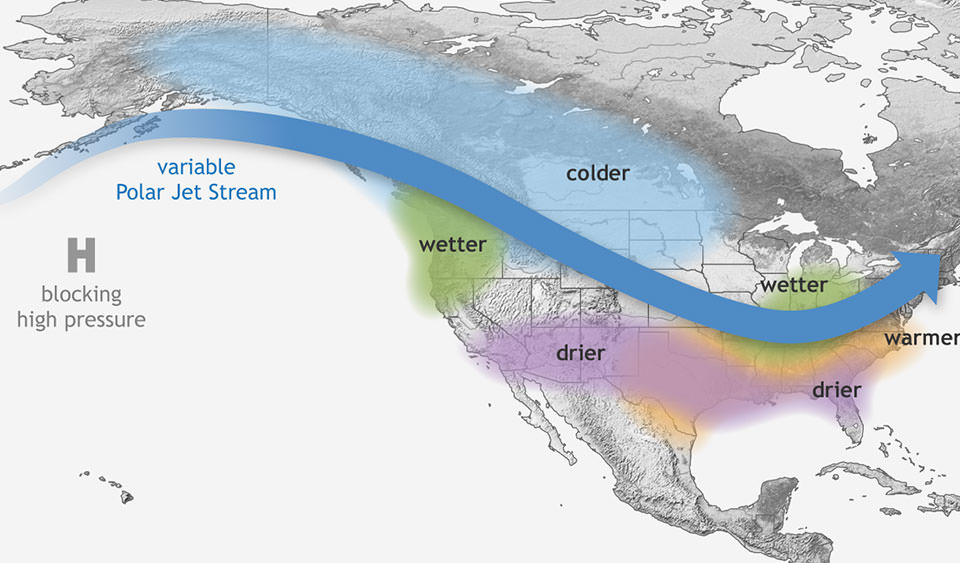In the realm of climate forecasting, understanding the El Niño-Southern Oscillation (ENSO) is paramount. The latest insights from the National Oceanic and Atmospheric Administration (NOAA) shed light on the February 2024 ENSO outlook, indicating a sustained vigilance for a return to neutral conditions.
NOAA’s climate experts have their eyes set on the evolving dynamics of ENSO, particularly on the La Niña phenomenon. The phenomenon is characterized by cooler-than-average sea surface temperatures in the central and eastern equatorial Pacific Ocean, and can have significant impacts on global weather patterns.

La Niña causes the jet stream to move northward and to weaken over the eastern Pacific. During La Niña winters, the South sees warmer and drier conditions than usual. The North and Canada tend to be wetter and colder. [Source: NOAA]
La Niña Implications
For those unfamiliar with the intricacies of ENSO, it’s important to recognize its influence on weather patterns across the globe. La Niña tends to be associated with a variety of weather phenomena, including increased hurricane activity in the Atlantic basin and drier conditions in the southern United States. While La Niña’s effects are often felt strongest during the Northern Hemisphere winter months, its impacts can extend well into the spring and even the summer. Therefore, understanding and monitoring ENSO conditions is crucial for various sectors, including agriculture, water resource management, and disaster preparedness.
NOAA’s ongoing monitoring and analysis of ENSO provide valuable insights for decision-makers, helping them navigate potential risks and opportunities associated with changing climate patterns. As we move forward into the upcoming seasons, the watchtower remains steadfast, reminding us of the ever-present influence of La Niña on our planet’s climate dynamics.





One Comment